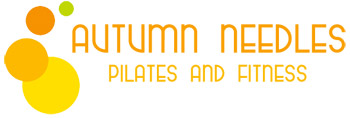As a culture we’ve been thinking about bullying in recent years: what it is, what it does, why it happens, how to handle it in the moment, and how to bring it to an end.
The fitness and wellness culture can sometimes be a big bully. When I looked up the word “bully” the definition I found was: “To seek to harm, intimidate, or coerce someone perceived as vulnerable.”
What’s sneaky within the fitness and wellness culture is that the intention seems honorable, but the means used can often “harm, intimidate, or coerce” in the effect they have on someone who is vulnerable. Often the person seeking out wellness is vulnerable because they are dealing with something in their bodies that feels challenging or even unmanageable and they’re looking for hope and a solution.
Maybe they want to fit into a particular pair of jeans.
Maybe they want to live pain-free after a period of time with chronic pain.
Maybe they’ve been sold an image of a particular way their body is supposed to look, like a bikini body (whatever that is-I’ve never worn a bikini because I find it impossible to actually, you know, swim and enjoy the water in something that is basically a few strings and a couple of patches) or an inner thigh gap (don’t even get me started on that one: we have inner thigh muscles for a reason and I like my own thick and strong) and their body doesn’t fit the mold.
Maybe they have knee problems or shoulder issues and they’ve googled it and found the “5 Exercises You Need to Do Now To Solve Your Knee Problems/Shoulder Issues/fill-in-the-blank whatever.”
Maybe they have something even more serious and they’re hoping for something literally life-saving.
As I’ve written posts here on injury prevention and aging stronger and building better habits, there’s always a voice in the back of my head telling me to be careful what I say and how I say it. I want to be careful because sometimes the healthiest impulses and the purest of motivations can turn and become a subtle form of bullying, making people feel like it’s somehow their fault if their bodies don’t meet some abstract societally-defined standard of health and fitness, or alternatively making them feel like there’s a magic bullet here to fix everything.
We want to be in control of our lives. We imagine if we just do the right thing everything will work out and if everything doesn’t work out, well, we probably did the wrong thing and maybe if we do the right thing now we can turn it around. The people around us who had bad things happen to them, they probably did the wrong thing, too, and that’s why they’re suffering now.
This is magical thinking. A crazy amount of what happens in our lives is down to chance. We don’t have any control over it whatsoever.
I got handed an example of this recently when I heard that a beloved former teacher of mine has been diagnosed with early onset Alzheimer’s.
You’d think with all the yoga and clean living he’s done over the decades…
And there’s the rabbit hole we go down. The bully in our thinking. If this, then that. If he’s been doing all those things right, he must have made a mistake somewhere along the line to end up like this. We’re looking for the reason, the rationale. How did this happen? We need an answer where there is none.
We beat up on ourselves or each other over these random things that happen in life. We’re full of snappy easy suggestions for ourselves and others to make it better. When we give in to that, our good impulses toward making healthy choices and helping our friends do the same can backfire in a big way.
I recently read Between Two Kingdoms: A Memoir of a Life Interrupted by Suleika Jaouad. (It’s excellent, by the way, if you’re looking for a good read.) She got dealt a really bad hand of cancer when she was very young. Here’s what she has to say about wellness:
“…I begin to think about how porous the border is between the sick and the well. As we live longer and longer, the vast majority of us will travel back and forth across these realms, spending much of our lives somewhere in between. These are the terms of our existence. The idea of striving for some beautiful, perfect state of wellness? It mires us in eternal dissatisfaction, a goal forever out of reach.
To be well now is to learn to accept whatever body and mind I currently have.”
So then, how to approach fitness and health and wellness? Because the drive toward improvement is valuable despite everything I’ve said in this post.
Try this on and see how it fits you: Can you accept and love the body you have so much that you simply want to do right by it for its own sake? To care for it and support it because you know you’re providing nourishment and nurturing and without an idea of an end goal that has to look a certain way? Can you let other people do the same thing? Can you define “fitness” as being fit for the things that are important to you? Can you define “health and wellness” in a broadly flexible way that allows for the natural changes we all face in life, where sometimes health means you allow yourself time to be sick when it comes upon you?
While I’m asking you these questions, I’m reminded to ask myself as well. I don’t always do this well and I do sometimes go down that rabbit hole that leads nowhere good or useful. I can be my own worst bully and that is not what I want to be.
copyright 2021 Autumn Needles Pilates and Fitness LLC
